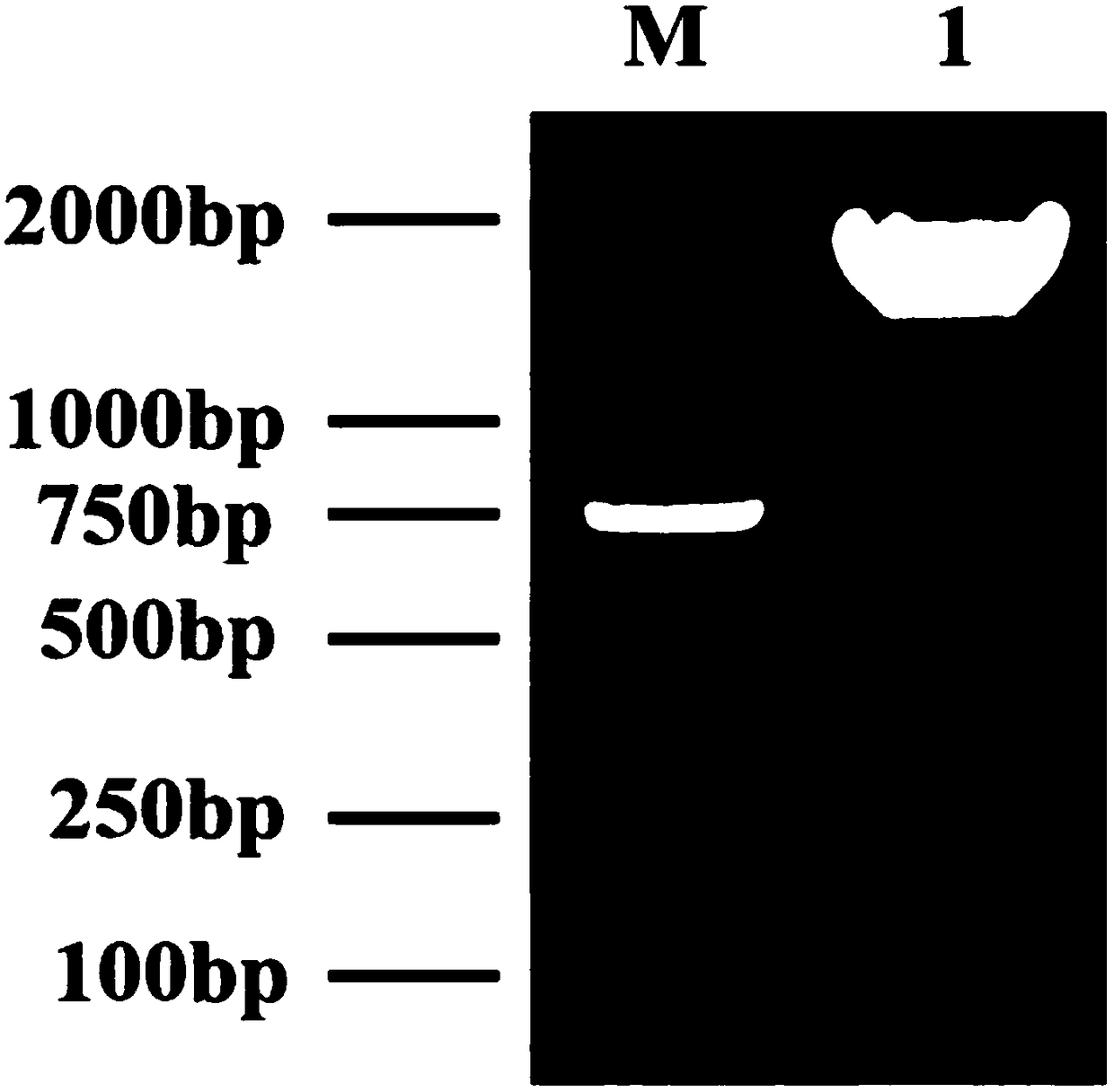Fluorescent identification method for transfer of mRNA molecules between stock and scion of plants
An identification method and fluorescence technology, which is applied in the field of plant molecular biology, can solve the problems of inability to observe mRNA transfer intuitively, and achieve the effect of low cost, high transgenic efficiency and simple process
- Summary
- Abstract
- Description
- Claims
- Application Information
AI Technical Summary
Problems solved by technology
Method used
Image
Examples
Embodiment 1
[0037] Example 1 Gene RNA Extraction
[0038] The total RNA from the phloem of Du pear was extracted by the CTAB method (Zhang Yugang et al., 2005), dissolved in 30 μL DEPC water, detected by electrophoresis, and stored in a -80°C refrigerator for later use.
[0039] (1) Remove DNA from RNA:
[0040] (2) Treat at 37°C for 30 minutes; add 550 μL RNase-free water (treated with 0.1% DEPC), then add an equal volume of 600 μL CI and mix well;
[0041] (3) Centrifuge at 10000rpm for 10min at 4°C, absorb the supernatant, then add an equal volume of CI and mix gently; centrifuge at 10000rpm for 10min at 4°C;
[0042] (4) Aspirate the supernatant, add 2 times the volume of absolute ethanol to the tube, and precipitate at -20°C for 1 hour;
[0043] (5) Centrifuge at 12000rpm for 20min at 4°C; discard the supernatant, then add 1mL of 75% ethanol to rinse and precipitate, centrifuge at 12000rpm for 5min, rinse twice and suck out excess ethanol with a pipette;
[0044] (6) Put it in an ...
Embodiment 2
[0047] Example 2 Construction of overexpressed GFP-PbHMGR1 vector and reverse transcription of RNA into cDNA
[0048] The RNA obtained in Example 1 was reverse-transcribed into cDNA according to conventional methods, and the obtained cDNA was used as a template for the following PCR amplification.
[0049] According to the plant HMGR1 gene sequence information of Pyrus betulaefolia Bunge, referring to the restriction site on the pCAMBIA1305 vector, PbHMGR1 CDS selects BglII and SpeI as the gene insertion site, the underline indicates the restriction site, and the primers are designed as follows:
[0050] Upstream primer: 5'- AGATCT ATGGACGTCCGAAGGC-3', (SEQ ID NO.2)
[0051] Downstream primer: 5'- ACTAGT TTAAGCGGACGCAACAG-3' (SEQ ID NO. 3).
[0052] The above primers were synthesized by Zhongmei Taihe Biotechnology Co., Ltd.
[0053] PCR reaction system: 2×Es Taq MasterMix (Dye) was purchased from (Beijing Kangwei Century Biotechnology Co., Ltd., CW0682S)
[0054]
...
Embodiment 3
[0061] Preparation and transformation of embodiment 3 Agrobacterium tumefaciens competent
[0062] 1. Preparation of competent cells of Agrobacterium tumefaciens
[0063] (1) Pick a single colony, add it to 20mL YEP liquid medium containing 20mg / L Rif, shake culture (28°C, 200rpm, under dark conditions) for 24-48h, shake the Agrobacterium until the appropriate OD600 value is 0.5 .
[0064] (2) Ice bath for 30 minutes;
[0065] (3) Centrifuge at 5000rpm for 10min at 4°C;
[0066] (4) Operate in an ultra-clean bench, discard the supernatant, add 0.15M NaCl, and resuspend;
[0067] (5) Centrifuge at 6000rpm for 5min at 4°C after 20min in ice bath;
[0068] (6) discard the supernatant, add 20mM CaCl 2 , resuspended, dispensed, 200 μL per tube, added an equal volume of 50% glycerol, and stored at -80°C.
[0069] 2. Transformation of Agrobacterium tumefaciens competent cells
[0070] (1) Take 100 μL of competent cells, put them on ice, and gently suspend the cells after compl...
PUM
 Login to View More
Login to View More Abstract
Description
Claims
Application Information
 Login to View More
Login to View More - R&D
- Intellectual Property
- Life Sciences
- Materials
- Tech Scout
- Unparalleled Data Quality
- Higher Quality Content
- 60% Fewer Hallucinations
Browse by: Latest US Patents, China's latest patents, Technical Efficacy Thesaurus, Application Domain, Technology Topic, Popular Technical Reports.
© 2025 PatSnap. All rights reserved.Legal|Privacy policy|Modern Slavery Act Transparency Statement|Sitemap|About US| Contact US: help@patsnap.com



